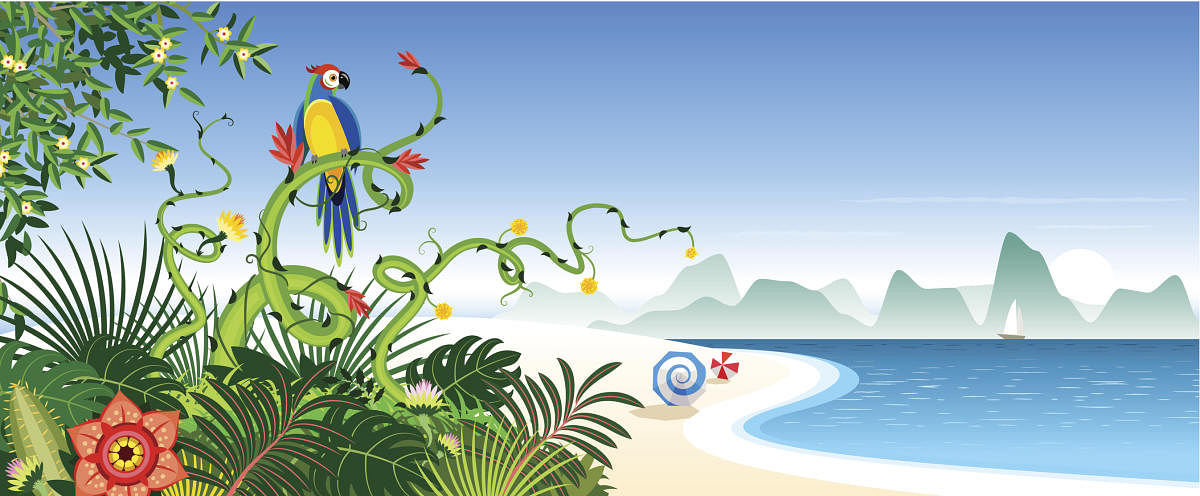
A recent take on the state of writing argues that novelists have been complicit in maintaining silence around global warming and climate change. In the way they have chosen to zoom into the particular, they have ignored zooming out to focus on the general. They have obsessed over everyday life, but overlooked larger units of time and place. In the aftermath of such a critique of the genre of the novel, Shubhangi Swarup’s Latitudes of Longing is a much needed correction. The subtitle “a novel” is a curious affirmation of the form — it claims that the story about the earth need not be alien to this form lost in the chatter about being human. But it is also a mandate on how the author and/or the publisher want the four seemingly disparate stories to be read.
Girija Prasad studies trees; his wife, Chanda Devi, speaks to them. She speaks to animals and ghosts too. In the Andamans, their story is the beginning of an exploration — that the Andaman Sea and the Indonesian islands are a part of the Himalayas. These characters are intertwined with other creatures: the crocodiles, for instance, that are “the most ancient of ascetics they have witnessed play itself out. They have seen gods walking around, enjoying the fruit of their own creation before handing it over.”
Plato is a revolutionary in Burma, imprisoned by the junta. After his release, he continues to trade in precious gems to support his rebellion against the regime. His struggle too has deep connections with nature and reflections upon it — that all fighting is not human nature, but because of nature, over its resources. That the blood that gets spilled is invariably that of the tortured and it is not unlike that of the extinct. War and its atrocities are akin to what happened in the ultimate story about creation itself: “If the evolution of life was guided by survival, the movement of continents was guided by an imagination that no life form would be capable of comprehending.”
Swarup has nudged writing from the subcontinent towards a greater imagination. Our notions of being situated, or belonging to a location, will change in pursuit of this imagination.
In Thamel, Kathmandu, Thapa, a smuggler, struggles with his loneliness. His family was killed by a landslide. He is bound to a bar dancer, obliged to tell her stories and there is no escaping nature here too: “No matter where you live out your story, the outcome will have been decided by the mountains.” His is an empowering story. It urges one to see beyond the ending, and renders the stories we often hear as meaningless, small, trapped in the ways they are seen to end.
Apo, in the snow desert between the boundaries of India and Pakistan, is the wisest man in his village. He is the one who truly understands the scale of life in terms of lifetimes. He “has enjoyed previous lives here, in the snow desert. As the landscape transformed, so did he. He witnessed a lonely dawn at the end of a hundred yers, for that is how long the sound didn’t rise after an asteroid hit the earth. His life as an earthworm left him humbled.
At a time when three-fourths of all life forms perished, right form plankton to the dinosaurs, he had lived on as for. In the ice ages, he was deeply attached to herd mentality as a woolly mammoth. During the great melt, he grew courage as a whale, leaving land to wade into water.”
These stories are from the subduction zone that includes the Andaman islands, Burma, Nepal and the Himalayas. The characters from this zone are tied in ways that encompass generations, not just borders.
The real story is that of the earth; war, or even conjugal love and maternal anxiety are mere fantasies. If it is true that what makes stories stories is the concept of change, then the readers have been fed lies as tales for the real change happens elsewhere. Sparse and spread out, the characters from the different parts of this zone speak for the faultlines that hold everything together.
The world is a lie when one gets to see the scale. Everything else is ignorant consumption in the form of instant meaning that regular endings offer to the act of reading and to life itself. War is not just bloodshed limited to the winner and the vanquished — it is “like gangrene to the earth’s flesh”.
Even love, that which sells the high-brow and the low-brow, and everything in between, turns out to be a shallow thing, for Shubhangi Swarup reminds us that love is a realisation gained over several lifetimes. Everything else in the romantic legends turns out to be a pale shadow, compared to the study of life and its origins.
Swarup has nudged writing from the subcontinent towards a greater imagination. Our notions of being situated, or belonging to a location, will change in pursuit of this imagination.